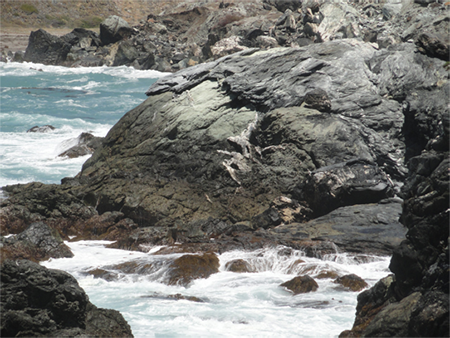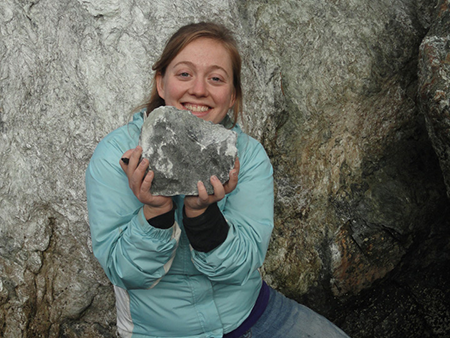Highly siderophile elements as tracers of mantle-crust interactions in subduction zone metamorphic rocks
 Arc magmas are generated by complex processes involving release of aqueous fluids/melts from the subducting slab, which rise and interact with overlying mantle. These processes are still not well understood. Metamorphic rocks from subduction-related mélange zones provide a critical window into these processes. Mélange zones, found in many subduction zone metamorphic complexes around the world, are thought to represent the interface between the subducting slab and the overlying mantle wedge. Their position above the dehydrating, subducting slab is the ideal location to record a variety of processes of aqueous infiltration, melting, and tectonic mixing of crust and mantle. Moreover, these processes act to hybridize crustal and mantle material creating a volatile-rich, mixed rock type with chemical and isotopic compositions reflecting the multiple sources of material in the mélange. Dehydration and melting of this hybridized rock type could potentially result in the production of fluids/melts that bear the signatures of multiple source materials.
Arc magmas are generated by complex processes involving release of aqueous fluids/melts from the subducting slab, which rise and interact with overlying mantle. These processes are still not well understood. Metamorphic rocks from subduction-related mélange zones provide a critical window into these processes. Mélange zones, found in many subduction zone metamorphic complexes around the world, are thought to represent the interface between the subducting slab and the overlying mantle wedge. Their position above the dehydrating, subducting slab is the ideal location to record a variety of processes of aqueous infiltration, melting, and tectonic mixing of crust and mantle. Moreover, these processes act to hybridize crustal and mantle material creating a volatile-rich, mixed rock type with chemical and isotopic compositions reflecting the multiple sources of material in the mélange. Dehydration and melting of this hybridized rock type could potentially result in the production of fluids/melts that bear the signatures of multiple source materials.

Large lawsonite blueschist mafic block covered by mélange matrix on the coast of Santa Catalina Island.

Graduate student Julia Gorman shows the sample of lawsonite blueschist she collected.
